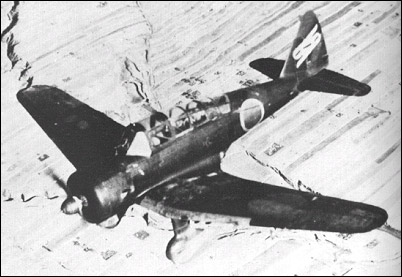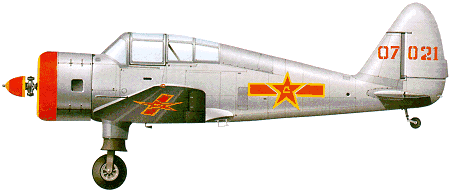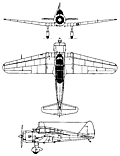 |
Tachikawa Ki-36 IDA1938 |  |
| ATTACKER | Virtual Aircraft Museum / Japan / Tachikawa |
 |
First flown in prototype form on 20 April 1938, the Tachikawa Ki-36 was a cantilever low-wing monoplane of all-metal basic structure, covered by a mix of light alloy and fabric. Landing gear was of fixed tailwheel type, the main units enclosed in speed fairings, and power was provided by a 336kW Hitachi Ha-13 radial engine. The two-man crew was enclosed by a long 'greenhouse' canopy and both men had good fields of view, that of the observer being improved by clear-view panels in the floor. The type was ordered into production in November 1938 as the Army Type 98 Direct Co- Operation Plane. Generally similar to the prototypes, the type was armed with two 7.7mm machine guns and introduced the more powerful Hitachi Ha-13a engine. When construction ended in January 1944, a total of 1,334 had been built by Tachikawa (862) and Kawasaki (472). The handling characteristics and reliability of the Ki-36 made the army realize that it was ideal for use as an advanced trainer, resulting in development of the Ki-55, intended specifically for this role and having armament reduced to a single forward- firing machine-gun. Following the testing of a prototype in September 1939, the army ordered this aircraft as the Army Type 99 Advanced Trainer; when production was terminated in December 1943 a total of 1,389 had been built by Tachikawa (1,078) and Kawasaki (311). Both versions were allocated the Allied codename 'Ida', and the Ki-36 was first deployed with considerable success in China. However, when confronted by Allied fighters at the beginning of the Pacific War it was found to be too vulnerable, being redeployed in China where it was less likely to be confronted by such aircraft. It was also considered suitable for kamikaze use in the closing stages of the war, being modified to carry internally a bomb of up to 500kg.

|  COMPANY PROFILE | |||||||||||||||||||||||||||||||||||||||||||||||||||||||||||||||
 |

|


20
reply